Define Inflorescence
Inflorescence refers to the arrangement of flowers on a plant. Imagine a bouquet where flowers are grouped together in a specific way – that’s similar to how inflorescence works in plants. Plants have different ways of arranging their flowers. Some have single flowers at the end of the step, while others have clusters of flowers grouped together. The way flowers are arranged can vary based on the type of plant and its species.
For example, a sunflower has a type of inflorescence called a “head”, where many small flowers are tightly packed together to form what looks like a single large flower. On the other hand, plants like lilies have a more simple arrangement with flowers growing individually in the stem. Understanding inflorescence helps botanists and gardeners identify plant species and learn more about their growth patterns and reproduction.
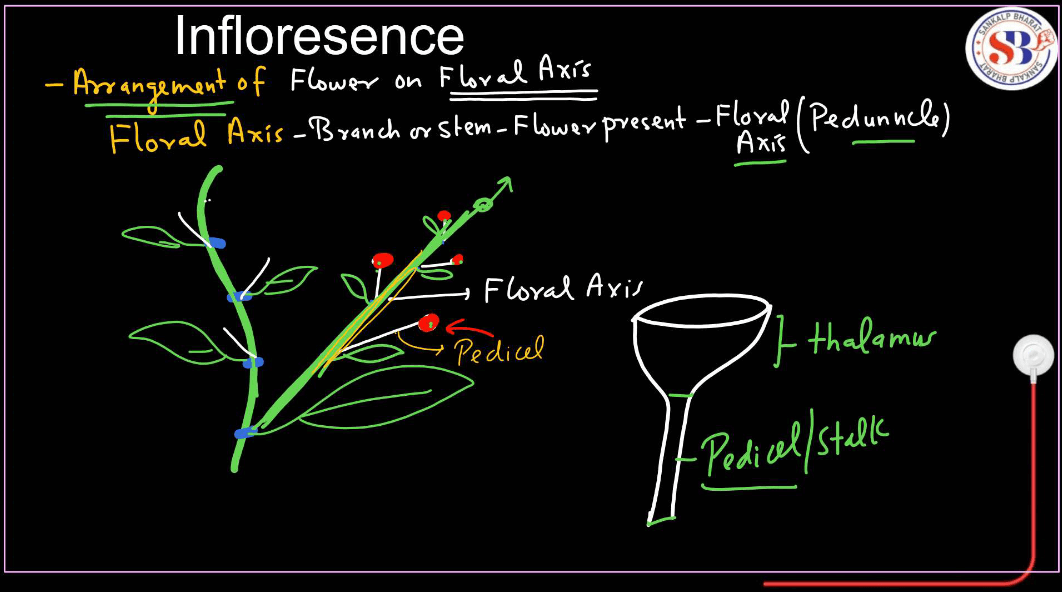
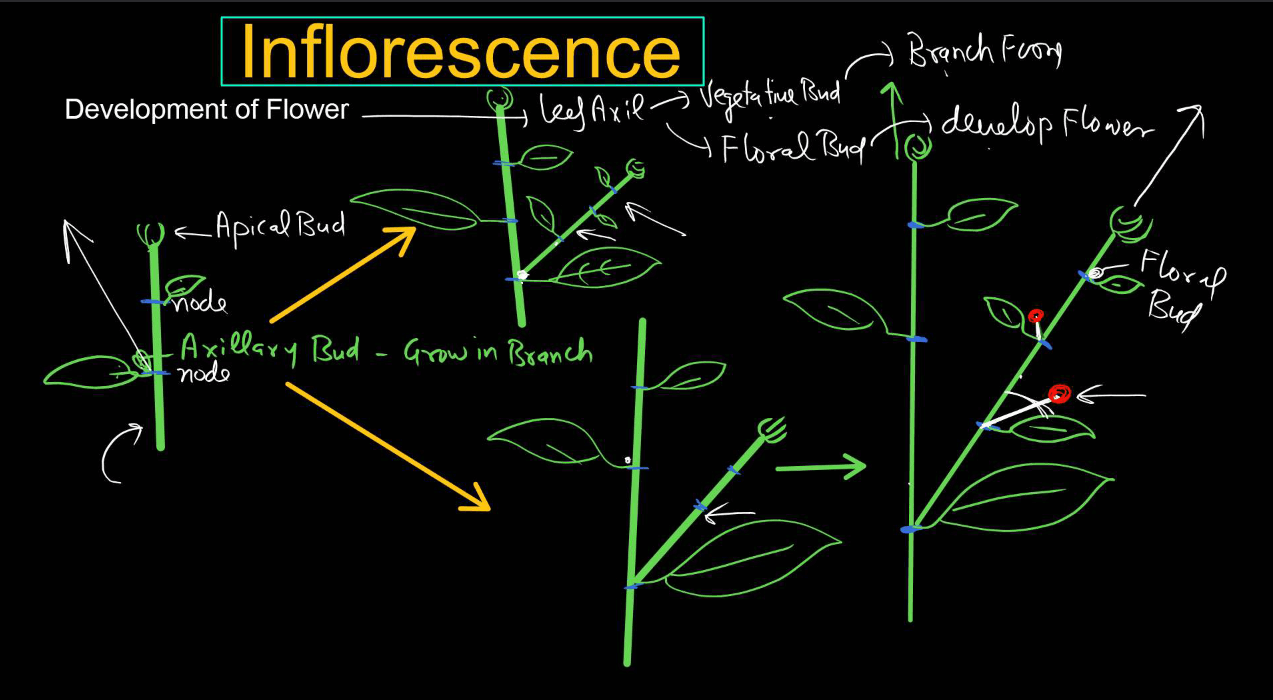
Different Types of Inflorescence
Inflorescence refers to the arrangement of flowers on a plant. There are several types of inflorescence based on their structure and arrangement. These inflorescence types vary in complexity in pollination and seed dispersal based on their ecological niche and reproductive strategies.
| Different Types of Inflorescence | |
| Types | Description |
| Racemose Inflorescence | Racemose inflorescence is further divided into simple racemose, and compound racemose. In simple racemose flowers are arranged along a single main axis, such as in snapdragons. In compound racemose, multiple smaller racemose are arranged on secondary axes, like in astilbe plants. |
| Cymose Inflorescence | The cymose inflorescence is of three different types: Monochasial Cyme, Dichasial Cyme, and Polychasial Cyme. In Monochasial cyme, each lateral branch produces a single flower. |
| Solitary Inflorescence |
A solitary inflorescence consists of a single flower on a stem, distinct from compound inflorescences that have clusters of flowers. Examples include sunflowers, roses, and tulips. |
| Compound Inflorescence | This type of inflorescence includes combinations of different types within a single structure. For example, the inflorescence of the Bougainvillea plant has a cyme-like structure with additional branching. |
| Verticillaster Inflorescence | Common in plants of the mint family (Lamiaceae), the verticillaster is a condensed, cylindrical inflorescence where flowers arise in whorls along a central axis. Each whorl typically has two opposite flowers. |
| Cyathium Inflorescence | Found in plants of the genus Euphorbia (spurge family), the cyathium is a specialized type of inflorescence where a cup-shaped involucre contains several small, unisexual flowers. |
| Hypanthodium Inflorescence | Found in plants of the fig family (Moraceae), such as the Ficus genus, the hypanthodium is a unique type of inflorescence where numerous tiny flowers are enclosed within a hollow, urn-shaped receptacle called a syconium. This structure is characteristic of Figs. |
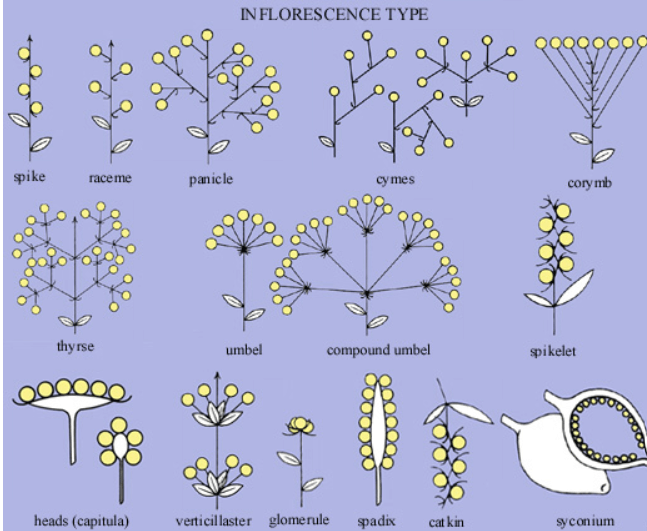
Racemose Inflorescence
A racemose inflorescence is a type of flower arrangement where the main axis grows continuously, producing flowers along its sides. This arrangement creates a more open and elongated structure compared to other types of inflorescences. In simple terms, imagine a stem that keeps growing and blooming flowers along its length, like a line of flowers extending from a central point. Examples of plants with racemose inflorescence include snapdragons, grapes, and orchids. This type of inflorescence allows for a sequential and continuous production of flowers, making it visually appealing and contributing to the reproductive success of the plant by attracting pollinators over an extended period.
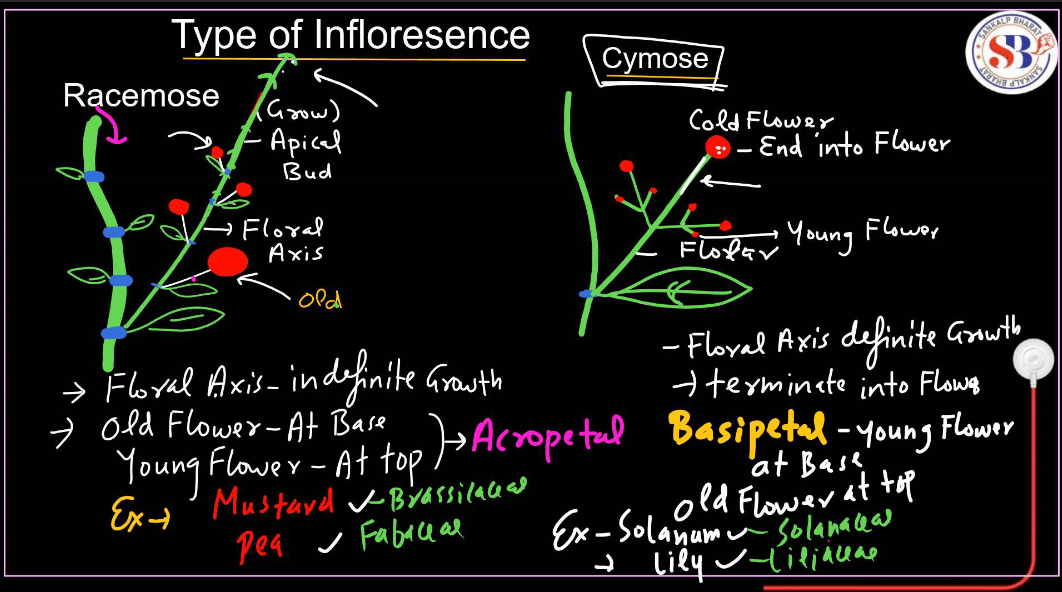
Cymose Inflorescence
A cymose inflorescence is a type of flower arrangement where the main stem grows upward and produces smaller stems, each ending in a flower. These smaller stems grow in a way that the terminal or topmost flower blooms first, followed by the lower ones sequentially. This arrangement gives a pyramid-like or flat-topped appearance to the inflorescence. Unlike the corymb or umbel, which also have a flat-topped appearance, the cymose inflorescence’s main stem continues to grow, producing new lateral stems with flowers at their ends. This type of inflorescence is common in plants like Jasmine and Bougainvillea, contributing to their aesthetically pleasing and organized floral display.
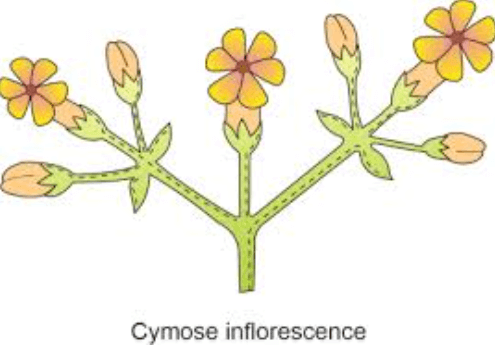
Solitary Inflorescence
A solitary inflorescence refers to a type of flowering structure where only a single flower is produced on a stem, rather than a cluster or group of flowers. This can occur in various plant species and can be the characteristic feature of certain plants. In constant, plants with clustered or multiple flowers on a single stem are termed “compound” or “composite” inflorescence. Examples of plants with solitary inflorescences include sunflowers, roses, and tulips, where each stem typically bears one flower.
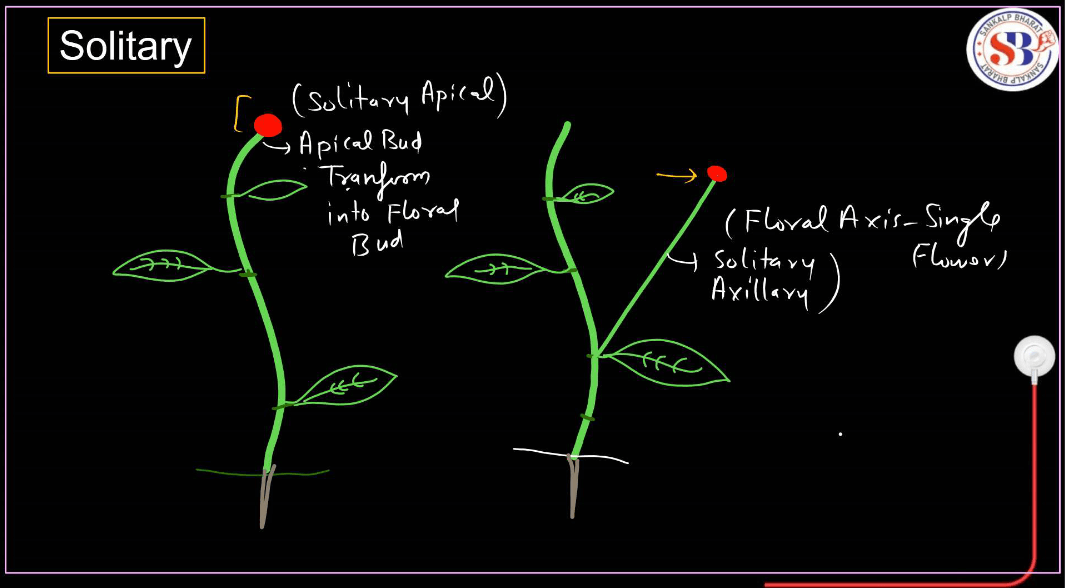
Compound Inflorescence
A compound inflorescence is a type of flower arrangement where multiple smaller inflorescences, called florets or partial inflorescences, are grouped together on a main stalk or axis. Each of these smaller inflorescence can be of different types, such as spikes, racemes, umbels, or cymes. The overall structure creates a larger and more complex inflorescence. Compound inflorescences are commonly seen in plants like the sunflower, where numerous small flowers are clustered tightly together, forming a large, showy head. This type of inflorescence allows plants to maximize their reproductive potential by producing many flowers in a compact arrangement, attracting pollinators efficiently.
Verticillaster Inflorescence
A verticillaster inflorescence is a type of flower arrangement found in certain plant species, particularly found in certain plant species, particularly in the family Lamiaceae (Mint Family). It is characterized by clusters of flowers arranged in a whorled or verticillate manner along a central stem or axis. Each whorl consists of several flowers clustered together at the same point, creating a dense and compact floral arrangement. One distinctive feature of a verticillaster inflorescence is that it often gives the appearance of a single flower due to the close grouping of individual flowers. However, upon closer inspection, one can see that each whorl contains multiple flowers, typically with two flowers per node in opposite positions. This type of inflorescence is commonly observed in plants like Basil, Thyme, and some species of Mint, contributing to their unique floral structure and overall appearance.
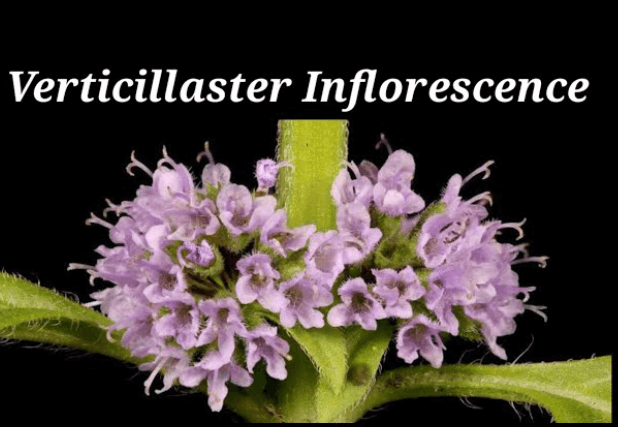

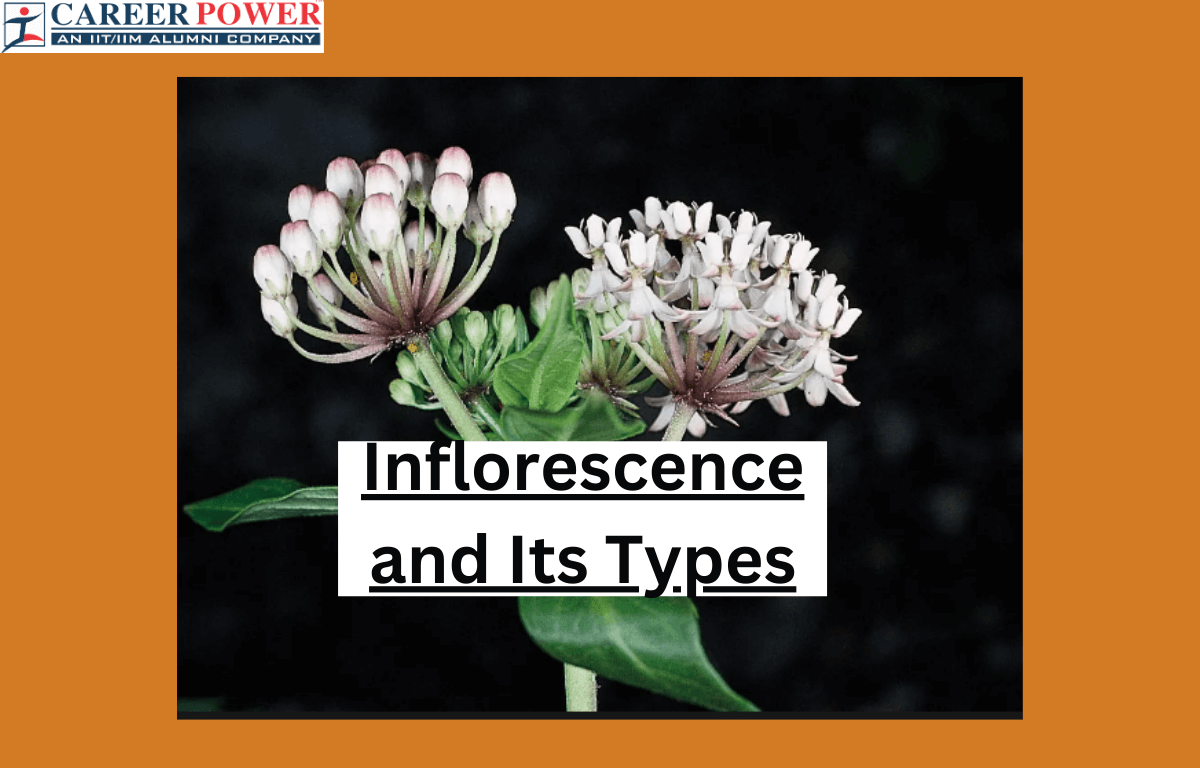

 50 Vegetables Name for Kids in English a...
50 Vegetables Name for Kids in English a...
 Food Chain: Definition, Types, Examples,...
Food Chain: Definition, Types, Examples,...
 Human Respiratory System: Definition, Di...
Human Respiratory System: Definition, Di...













